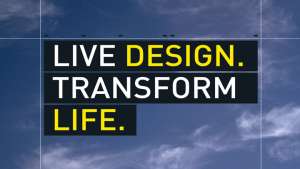From the Series
South African-born architect Nina Maritz runs her own practice that incorporates a full spectrum of private, government and corporate work, in Windhoek, Namibia. Her work has a strong focus on environmental, sustainable and community-based projects. At the 2013 AZA Architecture Conference she speaks these various projects.
I want to reduce the impact on the planet and look at innovative ways of using inexpensive, local, natural materials, says Maritz.
Working from an expanded out building in her garden, Maritz uses her office space to demonstrate the need for eco-friendly construction methods and technologies."We have incorporated many design principles we want our clients to use," she says. These include using solar power, recycling water and employing a roof-mounted evaporative cooler.
Maritz spoke about three of her recent works in Namibia - the Oshana Regional Library, Gobabis Regional Study and Resource Centre and Helao Nafidi Resource Centre - her biggest buildings to date. She received similar briefs for all three projects and decided to design a modular system that could be reconfigured to best suit each individual building's requirements and site.
Function and circulation are crucial to all of Maritz’s work: “If I get lost in a building, it’s a bad building”.
Architecture is about dealing with functional questions in a very important way, says Maritz.
In 2002, Nina Maritz Architect won a competition to design the Habitat Research and Development Centre in Namibia. The construction incorporates passive design principles along with mechanical input to ensure an optimal building environment with minimum energy use. Maritz further designed the building in an unconventional manner to ensure it complemented the natural typography around it: “Why build a conventional building when the point of the building is to research alternative and sustainable construction technology”.
Doing architecture for money is the wrong motivation. Decide what motivates you; if it’s money then rather become a charted accountant, she concludes.








